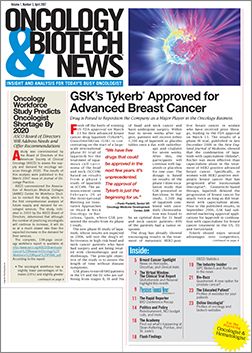Flash Findings: A Global View of Biotechnology
The Organisation for Economic Co-operation and Development (OECD) (www.oecd.org) "is a group of 30 member countries sharing a commitment to democratic government and the market economy. Best known for its publications and its statistics, its work covers economic and social issues from macroeconomics, to trade, education, development and science and innovation."
Click here to view as PDF.
FLASH FINDINGS
The Organisation for Economic Co-operation and Development (OECD) (www.oecd.org) “is a group of 30 member countries
sharing a commitment to democratic government and the market economy. Best known for its publications and its statistics,
its work covers economic and social issues from macroeconomics, to trade, education, development and science and
innovation.”
According to the OECD Biotechnology Statistics 2006 (http://www.oecd.org/dataoecd/51/59/36760212.pdf):
• The United States has the largest number
of biotechnology firms (2,196), followed
by Japan (804) and France (755).
The 15 reporting countries from the European
Union (EU) have a total of 3,154
biotechnology firms.
• Business sector expenditures on biotechnology
R&D are highest in the United States (PPP$ 14,232 million),
accounting for 66.3% of all business sector
biotechnology R&D in the 17 countries
reporting.
• The United States leads with an estimated
75,320 biotechnology R&D employees
in the business sector in 2003,
followed by the United Kingdom with
9,644 R&D employees. Both results are
based on all R&D employees in core biotechnology
firms.
• The United States accounts for 59.7% of
the estimated total of 288,584 biotechnology
employees among the 21 reporting
countries and for 56.9% of the estimated
129,172 biotechnology R&D employees
among 17 reporting countries.
• Sales in the United States in 2001 for
biotechnology goods and services only
was PPP$ 50,472 million, or 41% more
than the total sales in all other reporting
countries combined of PPP$ 35,873
million.
• The majority of biotech firms, 51%, are
active in health, followed by 19% of
firms active in agro-food, 16% active in
the “other” category, and 15% active in
industry-environmental applications.
• Germany and the United States have the
highest activity rate for health applications
(65%), followed by China (63%) and
Denmark (58%). Only 19% of activity is
in health in New Zealand.
• Health applications dominate biotechnology
R&D. Excluding Sweden and
Belgium where the shares are based on
R&D employees, 87% of all estimated
biotechnology R&D expenditures in the
remaining 12 countries reporting are
for health applications, 4% for agrofood
applications, 2% for industrial-environmental
applications, and 7% for
“other” applications.
• In all countries, the majority of biotechnology
R&D investments are focused
on health applications. Almost 90% or
more of biotechnology R&D is for health
applications in the United States (89%),
Iceland (92%), and Ireland (97%). The
lowest share is in Sweden, but this is
partly because health-related biotechnology
employment in the service sector
is assigned to the “other” category.
• The total sales in the 13 countries reporting
is PPP$ 82,852 million. As with
R&D investments, health applications
account for the large majority of the
total at 80%, followed by the “other”
(mostly services) at 9%, agro-food applications
at 6%, and industry-environmental
applications at 5%.
• The share of sales from health applications
of biotechnology is above 80% in
four countries: France (83%), the United
States (87%), Switzerland (88%), and Ireland
(92%). Conversely, the health applications
share is below 60% in Japan
(57%), Israel (52%), and Canada (53%).
• In 2002, more than 5,800 biotechnology
patents were filed at the European
Patent Office (EPO), most of which originated
from the United States (39.9%)
and the European Union (34.5%).
According to the National Science Foundation’s 2006 Science and Engineering Indicators and the CATI-MERIT database,
which collects information on strategic alliances by domestic and multinational firms for technology transfer or joint research
in biotechnology from announcements or articles in newspapers and professional journals:
• The share of all CATI-MERIT alliances
that involve biotechnology has been
increasing over time, from 11% of the
total in 1990 to 53% in 2003.
• Between 2001 and 2003 inclusive, 1,055
reported biotechnology alliances were
included in the CATI-MERIT database.
An alliance can include firms from two
or more of the four countries or regions,
or it can only include domestic firms.
A partner from the United States was
involved in 72.7% of the 1,055 biotechnology
alliances over these three years,
a European partner in 49.7%, a Japanese
partner in 8.2%, and a partner from a
non-triad country in 14.8%.
• The total number of biotechnology alliances
increased from 45 in 1990 to
368 in 2003. The growth in alliances
was greatest for those involving partners
from the United States, where the
number of alliances increased 9.8 times
from 28 in 1990 to 274 in 2003.
